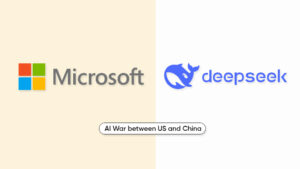Starlink: The Number 1 Global Wireless Internet Revolution by SpaceX

Starlink, an ambitious project developed by SpaceX under the visionary leadership of Elon Musk, is poised to redefine how the world accesses the internet. With its promise to deliver high-speed internet connectivity to the most remote and underserved regions, Starlink is not just another internet service; it is a global game-changer that could reshape digital access for millions. As it continues to expand, Starlink is proving to be more than a technological marvel; it is a potential solution to some of the most pressing connectivity challenges faced by communities worldwide.
1. What is Starlink? Understanding the Basics
Starlink is an advanced satellite internet system designed and launched by SpaceX, a company renowned for its pioneering achievements in space exploration. Unlike traditional internet service providers that rely on fiber optics, cables, or DSL infrastructure, Starlink uses a network of thousands of small satellites orbiting Earth at low altitudes. These satellites communicate with ground stations and user terminals, enabling broadband internet access from space.
The uniqueness of Starlink lies in its ability to deliver high-speed internet with low latency to virtually any location on Earth. Traditional satellite internet services, which use satellites in geostationary orbit (approximately 35,786 km above the Earth), often suffer from high latency, making real-time applications like video conferencing and online gaming difficult. In contrast, Starlink’s low Earth orbit (LEO) satellites, positioned at altitudes between 340 km and 1,200 km, significantly reduce latency, offering a more seamless online experience.

2. Key Advantages of Starlink’s Technology
Universal Connectivity: Reaching the Unreached with Starlink
One of Starlink’s most transformative features is its ability to provide internet access to regions that have historically been underserved or entirely unserved by traditional ISPs. Rural areas, remote communities, and even travelers in isolated locations can now gain access to high-speed internet. This capability is not just a technological advancement; it has profound social and economic implications.
Starlink’s global coverage is particularly valuable in regions where laying down fiber optic cables is logistically challenging or economically unfeasible. For instance, mountainous areas, islands, and vast rural expanses can benefit immensely from Starlink’s service. By bridging the digital divide, Starlink empowers these communities with access to education, healthcare, and economic opportunities that were previously out of reach.
This potential to connect the unconnected makes Starlink a powerful tool for international development. Governments and NGOs can use Starlink to enhance communication infrastructure in disaster-prone areas, improve access to online education in underserved regions, and enable telemedicine services in rural healthcare facilities. As the world becomes increasingly digital, Starlink’s role in bringing connectivity to every corner of the globe cannot be overstated.
High-Speed Internet with Low Latency: A New Standard
Starlink offers internet speeds ranging from 50Mbps to 150Mbps, with plans to increase these speeds as more satellites are launched. The network’s latency, currently between 20ms and 40ms, is comparable to or even better than many terrestrial broadband services. This makes Starlink an attractive option not only for basic internet browsing but also for bandwidth-intensive activities such as streaming 4K video, online gaming, and virtual meetings.
Low latency is crucial for real-time online applications. For gamers, the difference between victory and defeat can come down to milliseconds, making Starlink’s low-latency service particularly appealing. For remote workers and businesses relying on video conferencing, Starlink provides a reliable connection that minimizes lag and improves communication.
Moreover, as SpaceX continues to expand the Starlink constellation, speeds are expected to increase, and latency is projected to decrease even further. The company is already testing higher speeds and lower latencies, which could push Starlink’s service into the realm of gigabit internet, rivaling the best fiber optic connections available today.
Ease of Deployment and Use: Simplifying Connectivity
Unlike traditional internet services that require extensive infrastructure, such as laying cables or setting up towers, Starlink is relatively easy to deploy. Users receive a small satellite dish and a modem, which they can set up themselves. The dish automatically aligns with the nearest Starlink satellites, making the process simple even for those with limited technical expertise.
The ease of deployment makes Starlink particularly valuable in emergency situations. For example, after natural disasters, when traditional communication infrastructure may be damaged or destroyed, Starlink can quickly restore connectivity, enabling emergency responders to coordinate rescue efforts and facilitating communication among affected communities.
The simplicity of Starlink’s setup also extends to its maintenance. With a user-friendly app, customers can monitor their internet connection, troubleshoot issues, and even reposition their dish if necessary. This level of accessibility makes high-speed internet attainable for a broader audience, including those in remote areas where traditional service providers have failed to deliver.

3. Challenges Facing Starlink
High Initial Investment: The Cost of Global Coverage
While Starlink offers significant advantages, the project comes with a hefty price tag. Launching and maintaining a constellation of thousands of satellites is an expensive endeavor. Each satellite has a limited lifespan, typically around 5 to 7 years, after which they need to be replaced. SpaceX has invested billions of dollars in the development and deployment of Starlink, and the ongoing costs of maintaining and expanding the satellite network are substantial.
For consumers, the initial cost of Starlink’s user equipment can be a barrier. The satellite dish and modem, which are necessary to access the service, are relatively expensive compared to traditional internet options. While SpaceX has made efforts to reduce these costs, they remain higher than what many potential users in developing regions can afford.
Despite these challenges, SpaceX is committed to making Starlink accessible to as many people as possible. The company is exploring options for reducing costs, such as offering subsidized pricing in low-income regions or partnering with governments and organizations to provide Starlink at a reduced rate for underserved communities.
Astronomical Impact: Concerns from the Scientific Community
One of the major concerns surrounding Starlink is its impact on astronomical observations. The large number of satellites in low Earth orbit has raised alarms among astronomers, who worry that the satellites’ bright reflections and radio signals could interfere with their observations of the night sky.
The brightness of Starlink satellites can create streaks of light in telescope images, complicating the work of astronomers. Additionally, the radio frequencies used by the satellites can cause interference with radio astronomy, which relies on detecting faint signals from distant celestial objects.
In response to these concerns, SpaceX has made efforts to mitigate the impact of Starlink on astronomy. The company has introduced “DarkSat,” a satellite with an anti-reflective coating designed to reduce its brightness. SpaceX is also working on “VisorSat,” a satellite equipped with a sunshade to block sunlight from reflecting off its surfaces. These measures have shown some success, but the problem is far from fully resolved.
The challenge of balancing the benefits of global internet coverage with the need to preserve the night sky for scientific research is ongoing. As SpaceX continues to develop and launch new satellites, the company is actively seeking feedback from the scientific community and exploring additional solutions to minimize the impact on astronomy.
Connectivity Stability: Weathering the Elements
While Starlink offers high-speed internet with low latency, its performance can be affected by weather conditions. Heavy rain, snow, or other extreme weather events can disrupt the satellite signal, leading to temporary interruptions in service.
SpaceX is aware of these challenges and is working to improve the reliability of Starlink’s service under various weather conditions. The company has tested and implemented design improvements to the user equipment, such as enhancing the dish’s ability to shed snow and withstand harsh weather. However, achieving flawless connectivity in all weather conditions remains a significant hurdle.
Despite these issues, Starlink’s overall performance has been impressive, especially considering the challenges of delivering satellite-based internet. As the technology matures and more satellites are added to the constellation, the reliability and stability of the service are expected to improve further.

4. The Bright Future of Starlink
Starlink is still in its early stages, but the potential for growth and expansion is enormous. As SpaceX continues to launch more satellites and refine the service, Starlink is poised to become a dominant player in the global internet market. Elon Musk has expressed his vision for Starlink not only as a revolutionary internet service but also as a significant revenue stream to fund SpaceX’s ambitious projects, such as human missions to Mars.
Expanding Applications: Beyond Basic Internet Access
While Starlink is currently focused on providing high-speed internet to homes and businesses, its potential applications are far broader. The technology could revolutionize industries that rely on robust and reliable internet connectivity, such as maritime, aviation, and remote research stations. Ships and planes, which often struggle with slow and unreliable satellite internet, could benefit greatly from Starlink’s low-latency service.
In addition to commercial applications, Starlink could play a crucial role in humanitarian efforts. In disaster-stricken areas where communication infrastructure is destroyed, Starlink could provide immediate and reliable connectivity, aiding in rescue and recovery operations. Similarly, in conflict zones where traditional communication networks are disrupted, Starlink could offer a secure and independent means of communication.
Governments and military organizations are also showing interest in Starlink for its potential to enhance national security. The ability to establish a resilient communication network that is less vulnerable to terrestrial attacks or sabotage could be a game-changer for defense strategies.
International Partnerships and Regulatory Challenges
As Starlink expands globally, SpaceX is engaging with governments and regulatory bodies around the world. Each country has its own regulations regarding satellite communications, and obtaining the necessary approvals is a complex process. However, the benefits of Starlink’s service, particularly in underserved regions, make it an attractive proposition for many governments.
SpaceX is also exploring partnerships with telecommunications companies to integrate Starlink with existing networks. By combining the strengths of terrestrial and satellite-based internet, these partnerships could offer even more robust and comprehensive connectivity solutions.
The international expansion of Starlink is not without challenges. In addition to regulatory hurdles, SpaceX must navigate geopolitical tensions and competition from other satellite internet providers. However, with its technological advantage and the backing of a visionary leader like Elon Musk, Starlink is well-positioned to overcome these obstacles and continue its global rollout.

5. Conclusion
Starlink represents a bold leap forward in the quest for global internet connectivity. Its ability to bring high-speed internet to the most remote corners of the Earth, coupled with its potential to revolutionize industries and support humanitarian efforts, makes it one of the most significant technological developments of our time.
While challenges remain, including high costs, potential impacts on astronomy, and weather-related disruptions, the potential benefits of Starlink far outweigh these obstacles. As SpaceX continues to innovate and expand the Starlink network, the world will witness a new era of connectivity, where access to the internet is no longer a luxury but a universal right.
Starlink is more than just a service; it is a symbol of the transformative power of technology and human ingenuity. As the project evolves, it will not only change how we connect to the internet but also how we connect with each other, bridging gaps that have long divided our world. With Starlink, the future of global connectivity looks brighter than ever.













Post Comment